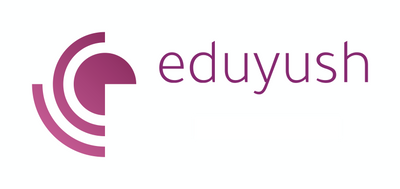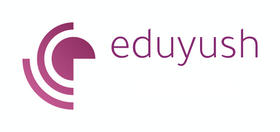Prepare Now For Your IFRS 9 Interview: 15+ Expert Questions & Answers!
Are you preparing for an interview in the financial services sector? If so, understanding International Financial Reporting Standards (IFRS 9) could be a great way to show employers that you're knowledgeable and up-to-date on current industry regulations.
As such, this blog post focuses on common IFRS 9 interview questions that are likely to come up. From explaining what is encompassed in the standard to discussing how it may impact your business decisions, this blog covers some of the most asked questions regarding assessing knowledge around IFRS 9.
Other essential reading
- How to nail IFRS interview questions
- Accounting interview questions for all finance roles
- Acing the "Why should we hire you question"
- Craft your perfect resignation letter with 12 formats
IFRS 9 Interview Questions
Can you explain the main provisions of IFRS 9?
IFRS 9 is an international financial reporting standard that establishes the principles for recognizing and measuring financial instruments. It replaces the previous standard, IAS 39, and aims to improve the relevance, comparability, and transparency of financial reporting. The main provisions of IFRS 9 include the following:
- A new classification and measurement model for financial instruments distinguishes financial assets and liabilities based on their business model and how they are managed and measured.
- New rules for the impairment of financial assets require expected credit losses to be recognized from the point of initial recognition rather than when there is evidence of credit deterioration.
- A new hedge accounting model provides more comprehensive guidance on when hedge accounting is permitted and how it should be applied.
How does IFRS 9 address the issue of hedge accounting?
IFRS 9 provides more explicit guidance on hedge accounting and introduces a new three-tier hedge classification system. It also allows for the designation of a portfolio of financial instruments as a hedging instrument, which was not permitted under IAS 39.
How does IFRS 9 impact the classification and measurement of financial instruments?
IFRS 9 is an International Financial Reporting Standard that guides the classification and measurement of financial instruments. It replaces the previous guidance in IAS 39 and applies to entities that report their financial statements by International Financial Reporting Standards (IFRS).
- Under IFRS 9, the classification and measurement of financial instruments are based on the entity's business model for managing the financial assets and the contractual cash flow characteristics of the financial assets. This means that financial assets are classified as either measured at amortized cost, fair value through other comprehensive income (FOCI), or fair value through profit or loss (FVTPL).
- Financial assets measured at amortized cost are those that the entity holds to collect the contractual cash flows, such as loans and receivables. These assets are measured at their initial recognition at their fair value plus, in some cases, transaction costs directly attributable to their acquisition or issuance. They are subsequently measured at amortized cost using the effective interest method.
- Financial assets measured at FOCI are those that the entity holds to collect the contractual cash flows but also can sell the asset before the end of its contractual term. These assets are measured at their initial recognition at their fair value plus, in some cases, transaction costs directly attributable to their acquisition or issuance. They are subsequently measured at their fair value, with any changes in fair value recognized in other comprehensive income.
- Finally, financial assets measured at FVTPL are those the entity holds for trading purposes or designated as at FVTPL. These assets are measured at their fair value at each reporting date, with any changes in fair value recognized in profit or loss.
Overall, IFRS 9 provides a more forward-looking approach to the classification and measurement of financial instruments and aims to improve the relevance, reliability, and comparability of financial reporting.
What are the different impairment methods prescribed by IFRS 9, and when should they be used?
Under IFRS 9, entities must use a forward-looking approach to assess the expected credit losses on their financial assets. This means that entities must estimate the credit losses that are expected to arise over the lifetime of the financial assets rather than just considering the credit losses that have been incurred up to the reporting date.
To do this, IFRS 9 provides three different impairment methods that entities can use, depending on the nature of their financial assets and the level of credit risk they face. These methods are
- the simplified approach,
- the direct approach, and
- the expected loss approach.
The simplified approach is the most straightforward of the three methods. It is based on a lifetime expected loss rate for each pool of financial assets, which is calculated by taking into account the credit quality of the assets, the historical credit loss experience of the entity, and any available forward-looking information. Under this approach, the expected credit losses are recognized in profit or loss over the lifetime of the financial assets.
The direct approach is similar to the simplified approach. Still, it provides additional flexibility for entities to consider their own historical credit loss experience when estimating the expected credit losses. This approach allows entities to consider the stage of their credit cycle and any specific credit risk factors that may affect their financial assets. Under this approach, the expected credit losses are recognized in profit or loss over the lifetime of the financial assets.
Finally, the expected loss approach is the most sophisticated of the three methods. It requires entities to estimate the expected credit losses every month based on a detailed analysis of the credit risk of each financial asset. This approach provides the most accurate and granular view of the expected credit losses on an entity's financial assets. Still, it is also the most complex and time-consuming to implement. Under this approach, the expected credit losses are recognized in profit or loss at the time they are incurred.
In general, entities must use the expected loss approach for financial assets considered a high credit risk, such as those that have been defaulted on or are considered past due. For other financial assets, entities can use the simplified or basic approach, depending on their specific circumstances and the level of credit risk they face.
How does IFRS 9 address the issue of fair value measurements, and how do they relate to the new expected credit loss model?
Under IFRS 9, fair value measurements are addressed by requiring entities to use a consistent and disciplined approach when estimating the fair value of their financial assets and liabilities. This means that entities must use market-based or observable inputs whenever possible and consider the effects of market participant assumptions and market conditions on the fair value estimates.
In addition, IFRS 9 introduces a new fair value hierarchy that categorizes the inputs used in fair value measurements into three levels.
- Level 1 inputs are quoted prices (unadjusted) in active markets for identical assets or liabilities.
- Level 2 inputs are observable inputs other than quoted prices included within Level 1, such as quoted prices for similar assets or liabilities in active markets or quoted prices for identical or similar assets or liabilities in markets that are not active.
- Level 3 inputs are unobservable inputs that reflect an entity's assumptions about the assumptions that market participants would use in pricing the asset or liability.
The fair value hierarchy is important because it provides a consistent framework for entities to use when estimating the fair value of their financial assets and liabilities. It also helps to ensure that the fair value estimates are based on the most reliable and relevant inputs available, improving the relevance and reliability of financial reporting.
About the new expected credit loss model, the fair value hierarchy is relevant because it provides a basis for estimating the fair value of impaired financial assets.
When a financial asset is considered impaired, the entity must recognize a loss equal to the difference between the asset's carrying amount and its fair value. The asset's fair value is then determined using the fair value hierarchy, with the appropriate input level depending on the asset's specific circumstances and the level of credit risk it faces. This ensures that the loss recognized on the impaired asset is based on the most reliable and relevant information available.
How does IFRS 9 impact the financial statements of banks and other financial institutions?
IFRS 9 significantly impacts the financial statements of banks and other financial institutions. One of the significant impacts is that it requires entities to use a more forward-looking approach to assess the expected credit losses on their financial assets. This means that entities must estimate the credit losses that are expected to arise over the lifetime of the financial assets rather than just considering the credit losses that have been incurred up to the reporting date.
This change in approach has several implications for the financial statements of banks and other financial institutions.
- First, entities must recognize expected credit losses on their financial assets more promptly and accurately, which can significantly increase the number of credit losses recognized in profit or loss. This can have a negative impact on the entity's net income and its overall financial performance.
- Second, the new expected credit loss model introduced by IFRS 9 requires entities to use a more complex and detailed approach to estimating the credit losses on their financial assets. This can increase the time and resources entities must devote to estimating and recognizing expected credit losses, impacting their operational efficiency and profitability.
- Third, the changes introduced by IFRS 9 can affect the comparability of financial statements across different entities. Each entity must use its assumptions and judgments when estimating the expected credit losses on its financial assets. This can make it more difficult for investors and other users of financial statements to compare the financial performance and credit risk of different entities.
Overall, the impact of IFRS 9 on the financial statements of banks and other financial institutions is significant and can have a material impact on their financial performance and credit risk profile. As a result, it is essential for entities in the financial sector to consider the implications of IFRS 9 carefully and to implement the new standard in a way that is consistent with their business model and risk profile.
Can you discuss the implementation challenges and benefits of IFRS 9 for companies and investors?
The implementation of IFRS 9 presents challenges and benefits for companies and investors.
- One of the main challenges is the need for entities to use a more forward-looking and sophisticated approach to estimating credit losses on their financial assets. This can require entities to develop new systems and processes for estimating and recognizing expected credit losses, which can be time-consuming and costly.
- Another challenge is the need for entities to use a consistent and disciplined approach when estimating the fair value of their financial assets and liabilities. This requires entities to use market-based or observable inputs whenever possible and to consider the effects of market participant assumptions and market conditions on the fair value estimates.
- This can be difficult for entities that do not have access to a well-developed and liquid market for their financial assets and liabilities, as they may need to use more complex and subjective inputs to estimate the fair value of these assets and liabilities.
Despite these challenges, there are also several benefits that companies and investors can expect to see from implementing IFRS 9.
- One of the main benefits is that the new standard provides a more forward-looking and relevant approach to estimating credit losses, which can improve the quality and reliability of financial reporting. This can provide investors with a more accurate and comprehensive view of an entity's financial performance and credit risk profile, which can help them to make more informed investment decisions.
- In addition, the new expected credit loss model introduced by IFRS 9 provides a more granular and detailed view of an entity's credit risk, which can help investors to identify and manage potential risks more effectively. This can reduce the likelihood of unexpected losses and improve the overall stability and resilience of the financial system.
- Finally, implementing IFRS 9 can improve the comparability of financial statements across different entities, as it provides a consistent and disciplined framework for estimating the credit losses and fair value of financial assets and liabilities. This can make it easier for investors and other users of financial statements to compare the financial performance and credit risk of different entities, which can support more efficient and effective decision-making.
Summing up
Preparing for an interview always gives you an edge over other candidates. IFRS 9 is a complex regulation and discussing it in-depth shows potential employers that you have the required financial reporting knowledge.
English commentator Peadar Donohue has stated that "employers put greater emphasis on relevant qualifications than ever before". So, if you want to stand out from other candidates vying for the same role, taking an IFRS 9 course is the ideal way.
By increasing your understanding of this regulation, you'll be better equipped to deal with any curveballs thrown your way during an interview whilst also impressing potential employers with the breadth of your current industry knowledge.
If you would like to take an overall IFRS certification, do browse our site for the AICPA Certificate in IFRS or the ACCA Diploma in IFR
Interview Questions? Answers.
- Accounting Interview questions and answers
- Accounts receivable interview questions
- Accounts payable interview questions
- ESG Interview questions
- Forensic accountant interview questions
- Financial controller interview questions
- GST interview questions
- IFRS interview questions and answers
- IFRS 15 interview questions and answers
- IFRS 17 Interview Questions and answers
- IFRS 9 Interview Questions and Answers
- IFRS 16 Interview Questions and answers
- Managerial round interview questions and answers
- Blockchain interview questions for finance professionals
It's important to dress professionally for an interview. This usually means wearing a suit or dress pants and a button-down shirt for men, and a suit or a dress for women. Avoid wearing too much perfume or cologne, and make sure your clothes are clean and well-maintained.
It's best to arrive at least 15 minutes early for the interview. This allows you time to gather your thoughts and compose yourself before the interview begins. Arriving too early can also be disruptive, so it's best to arrive at the designated time or a few minutes early.
It's a good idea to bring a few key items to an interview to help you prepare and make a good impression. These might include:
- A copy of your resume and any other relevant documents, such as references or writing samples.
- A portfolio or sample of your work, if applicable.
- A list of questions to ask the interviewer.
- A notebook and pen to take notes.
- Directions to the interview location and contact information for the interviewer, in case you get lost or there is a delay.
t's generally not appropriate to bring a friend or family member to an interview, unless they have been specifically invited or are necessary for accommodation purposes.
If you are running late for an interview, it's important to let the interviewer know as soon as possible. You can try calling or emailing to let them know that you are running behind and to give an estimated arrival time.
If possible, try to give them a good reason for the delay, such as unexpected traffic or a last-minute change in your schedule. It's also a good idea to apologize for the inconvenience and to thank them for their understanding.
- It's generally a good idea to address the interviewer by their professional title and last name, unless they specify otherwise. For example, you could say "Mr./Ms. Smith" or "Dr. Jones."
Yes, it's perfectly acceptable to ask about the company's culture and benefits during the interview. In fact, it's often a good idea to ask about these things to get a better sense of whether the company is a good fit for you. Just make sure to keep the focus on the interview and not get too far off track.
It's okay to admit that you don't know the answer to a question. You can try to respond by saying something like: "I'm not sure about that specific answer, but I am familiar with the general topic and would be happy to do some research and get back to you with more information."
Alternatively, you can try to answer the question by using your own experiences or knowledge to provide context or a related example.
It's generally best to wait until you have received a job offer before discussing salary and benefits.
If the interviewer brings up the topic, you can respond by saying something like: "I'm open to discussing salary and benefits once we have established that we are a good fit for each other. Can you tell me more about the overall compensation package for this position?"
It's important to remember that employers are not allowed to ask questions that discriminate on the basis of race, religion, national origin, age, disability, sexual orientation, or other protected characteristics. If you are asked an illegal question, you can try to redirect the conversation back to your qualifications and skills for the job.
For example, you might say something like: "I'm not comfortable answering that question, but I am excited to talk more about my skills and experiences that make me a strong fit for this position."
It's okay to admit that you don't understand a question and to ask for clarification. You can try saying something like: "I'm sorry, I'm not sure I fully understand the question. Could you please clarify or provide some more context?"
At the end of the interview, thank the interviewer for their time and express your interest in the position. You can also ask about the next steps in the hiring process and when you can expect to hear back. Finally, shake the interviewer's hand and make sure to follow up with a thank-you note or email after the interview.











Leave a comment